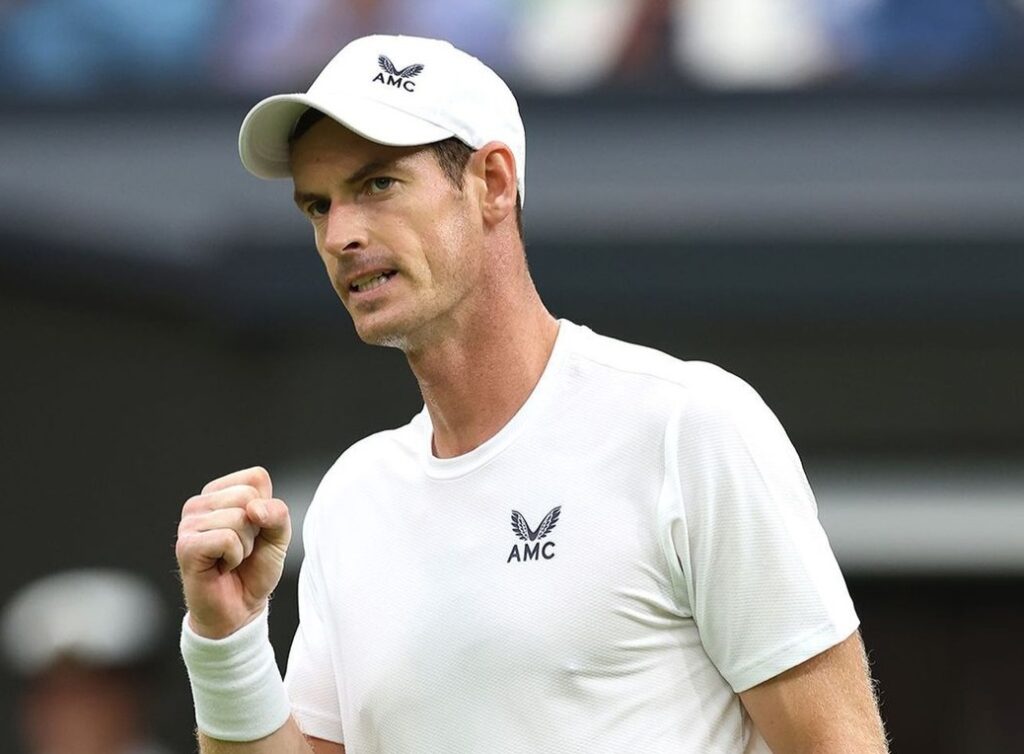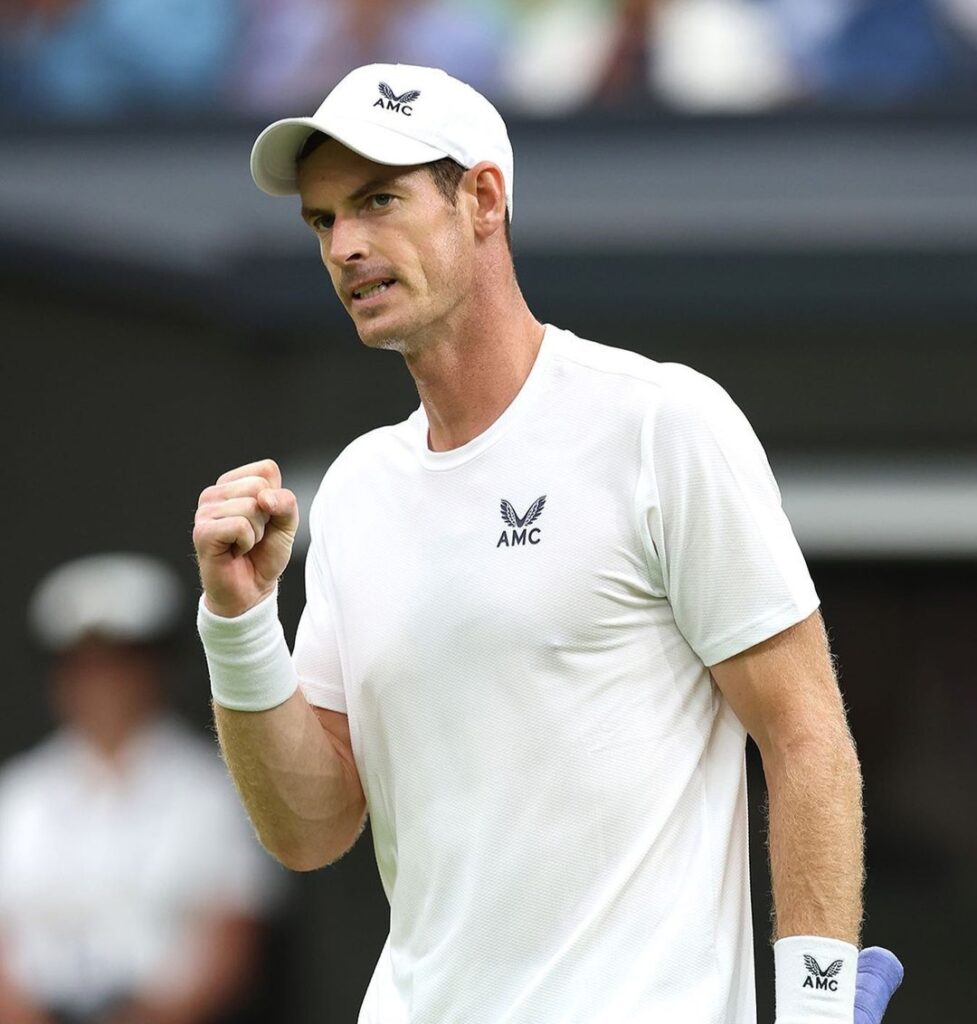“Losing in the second round, I don’t find that motivating,” said Andy Murray, former Wimbledon champion, after slipping to defeat against Stefanos Tsitsipas in an epic five-setter. “It’s not why I put all of the work in. I’m unbelievably disappointed and upset now. Maybe I will feel different in a few days but right now it doesn’t feel good.” Murray had echoed similar sentiments after bowing out in early rounds of the 2021 and 2022 Wimbledon Championships, as he slowly trudges through the fag end of an illustrious career.
It was around six years ago when a hammer blow turned his impressive career upside down. On June 27, 2017, Murray had to withdraw from an exhibition match at Hurlingham Club due to a sore hip. In fact, he soon revealed that he had been managing the hip problem for about seven years. But if you now look back at his match against Stan Wawrinka in the French Open, where he seemed to be in some pain, and his subsequent withdrawal from the exhibition match, it is crystal clear that Murray’s major troubles with his hip began in mid-2017.
Since then, he has had a couple of hip surgeries, including one where “a cobalt-chrome metal cap was placed over the femur with a matching metal cup in the acetabulum”. Incidentally, before his second surgery, Murray had even hinted at retiring from the game. But the second surgery helped him to prolong his career. Eventually, in 2022, Murray was able to play again at a satisfactory level as he found himself in the top 50 of the singles rankings.
This year, at the Australian Open, he won many hearts with his tenacious performance, winning a couple of gruelling five-setters against Matteo Berrettini and Thanasi Kokkinakis. The match against Kokkinakis lasted five hours 45 minutes – the longest he has played in his career so far. The Murray-Berrettini clash also had some high-voltage tennis on display. In the first two sets, Murray knitted together a vintage show under the roof, cracking the forehand to put pressure on his opponent’s rather average backhand. He also served well and, more importantly, his returns held up well against Berrettini’s big serves.
In the recent past though, Murray hasn’t exactly been able to maintain his leads, and his seeded opponent clawed his way back into the match by winning the next two sets. In the final set, at 4-5, Murray was even down a match point. Berrettini could have sealed it if he had hit what seemed like an easy backhand pass. But he smashed it straight into the net. Ultimately, with a bit of rub of the green going his way, Murray triumphed via a tie-break. Those early morning matches took their toll on Murray – the one against Berrettini ended at 4AM local time. After all, at 35, here was a player who was playing one marathon match after another with a metal in the hip. He eventually succumbed to Roberto Bautista Agut in the third round.
A few months after his gritty show at the Australian Open, Murray decided to withdraw from the French Open in order to prepare for Wimbledon. He began the grass-court season by winning a couple of 125 Challengers. Unfortunately for Murray, he couldn’t get past Tsitsipas at Wimbledon, opening up old wounds of losing to the same player in five sets at the US Open in 2021.
It wasn’t always like this. Just a year before Murray went through the pain and agony of the hip injury, he had touched the zenith of his prowess: Hoisting the Wimbledon trophy and winning the gold medal at the Olympics for the second time. By then, he also had won the US Open in 2012, beating Novak Djokovic, his nemesis, in a believe-it-or-not five-setter.
Alongside the Nadal-Djokovic tussle at the Australian Open final in 2012, that US Open final has to be one the most brutal baseline matches ever played in the history of tennis. A match that lasted four hours and 54 minutes had some mind-numbing rallies from the baseline. In the first set itself, there was a 54-shot rally, and that was followed by an equally engrossing tie-break, with Murray winning it 12-10. It was perhaps Murray’s better depth on the baseline that allowed him to clinch the tie-break. It’s not often that you end up seeing Djokovic playing second fiddle on the baseline, but in that tie-break, Murray seemed to have a slight edge.
Murray then took a 4-0 lead in the second set. But Djokovic is renowned for his gladiatorial skills, and he levelled the second set at 5-5 with a splendid lob. Murray still made it two sets to love by coming out on top 7-5. Djokovic, however, clawed his way back into the match by winning the third and fourth.
Finally, Murray closed out the match, winning the last set 6-2 to become the first British male singles champion at a Grand Slam since Fred Perry in 1936. Such was the brutal hitting on display that both players started limping as the match progressed.
An exhausted and emotional Murray said after the match: “When I realised I had won, I was a little bit shocked, I was very relieved and I was very emotional.” Until then, Djokovic seemed to have some kind of mental edge over Murray, having won another hair-rising five-setter at the Australian Open semi-final in the same year.
Murray is also one of the only three players to have won more than 10 matches (11) against Roger Federer. Actually, Murray held an 8-5 lead in their H2H before Federer 9 of their next 12 meetings. Although Murray achieved very little success in their Grand Slam match-ups, he did pip Federer at the London Olympics in straight sets in 2012.
It was sweet revenge for Murray as he had lost to the same player and on the same court in the Wimbledon Championships just over a month earlier. Such was Murray’s dominance in that match that Federer went almost an hour without winning a single game.
Having brought up the names of Federer and Djokovic, one can’t forget his rivalry against Rafael Nadal. Nadal too dominated their H2H, including Grand Slams, 17-7. Murray had some success against Nadal on outdoor hard courts. One of his most significant wins against Nadal came in the final of the Madrid Masters in 2015 – his first and only win on clay against Nadal. He also defeated Nadal in the quarter-final and semi-final of the Australian and US Open in 2010 and 2008.
So what is Murray’s playing style? On the ATP Tour, he has been regarded as one of the finest counter-punchers. At his peak, he could turn from defence to offence with ease and hit winners from defensive positions. He tends to go cross-court on his forehand wing, and has a deadly down the line double-handed backhand. He also has a very impressive return of serve. Although the second serve has come under scrutiny from time to time.
As and when he decides to hang up his boots, Murray would certainly go down as a modern-day great. He has three Grand Slam titles, two golds at the Olympics and 46 ATP titles, including 14 Masters 1000 wins. He has also been ranked No.1 for 41 weeks. And he has achieved all that at a time when the Big 3 won 65* majors in total. He has also had to battle through hip trouble, and a condition known as bipartite patella.
Many summer and rainy seasons ago, when Murray was just 3, Judy Murray, his mother, used to take him to local courts to play tennis. A couple of years later, he played his first competitive game. At the tender age of 8, he was competing with adults in the Central District Tennis League. In other words, Murray was destined for greatness.





